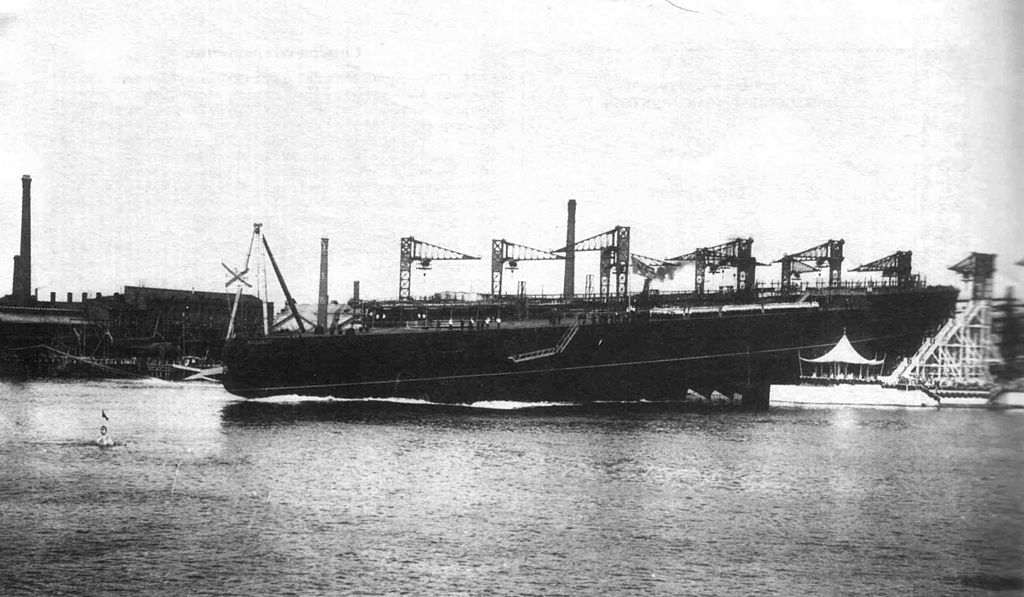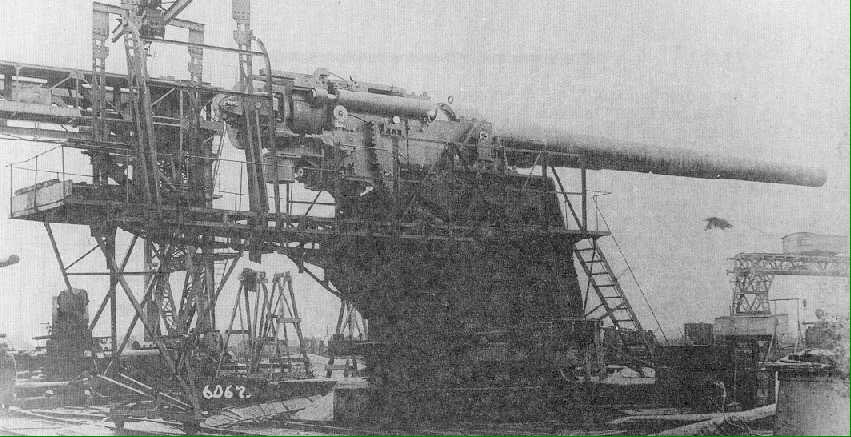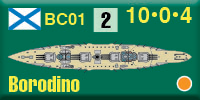| Jutland:
Borodino-Class Battle Cruisers
By Mike Bennighof, Ph.D.
July 2021
 Defeat in the Russo-Japanese War, followed by social revolution in Russian cities, had profound effects on the Imperial Russian Navy. The war’s lessons would be rigorously studied, and applied to tactics, operational plans and warship design. Defeat in the Russo-Japanese War, followed by social revolution in Russian cities, had profound effects on the Imperial Russian Navy. The war’s lessons would be rigorously studied, and applied to tactics, operational plans and warship design.
In one of the few Russian successes at sea, the squadron of armored cruisers based at Vladivostok had steamed around Japan, preying on merchant shipping in waters the Japanese had believed utterly safe, thereby sparking panic among both government and civilians. The Japanese armored cruiser squadron, meanwhile, had stood in the battle line alongside the actual battleships and used their speed to help bring the Russian fleet to battle on terms of Admiral Heihachiro Togo’s choosing.
Starting in 1907, the Russian Naval General Staff developed its 1909-1919 fleet program with priority given to a squadron of four armored cruisers for the Baltic Fleet. These ships should have the range to operate deep in enemy waters on independent missions, the speed to screen the battle fleet and the heavy guns and armor to allow them to fight alongside the newly-ordered dreadnoughts.

Izmail prepares for launch.
The Marine Technical Committee issued its initial requirements in May 1910: a speed of at least 28 knots and armament of at least eight 305mm (12-inch) guns, on a ship 204 meters long powered by turbines able to develop 80,000 horsepower. A great deal of discussion and modification included an increase in armament to at least nine 305mm guns in three triple turrets and a silhouette similar to that of the Gangut-class battleships. The requests for proposals went out to six Russian and seventeen foreign shipyards in August 1911: affirming the words of V.I. Lenin, the firms invited to bid on the project included the German shipyards A.G. Vulkan and Blohm und Voss, both of which provided detailed proposals.
The Committee rejected all proposals that included super-firing turrets, strongly preferring that all turrets be sited on the main-deck level in the same “Cuniberti” arrangement as the Gangut class battleships. Blohm und Voss included a proposal for four turrets with 356mm (14-inch) guns that the committee liked so much that they apparently leaked the concept to two of the Russian competitors. The committee then chose a design by St. Petersburg’s New Admiralty shipyard.

Izmail hits the water.
The Navy Ministry desperately wanted this ship, but she did not fall within the budgetary guidelines laid down by the Duma in June 1912. Modifications ensued, shaving off some armor and reducing the maximum speed by a knot to 27 knots. Estimates still came in over budget, so with the aid of some bureaucratic subterfuge the missing amount came from money already approved for the Svetlana-class light cruisers, which now became somewhat slower and smaller.
With that settled, the Ministry placed formal orders in September 1912: two ships from New Admiralty (eventually named Borodino and Navarin) and two from rival Baltic (Izmail and Kinburn). Delivery was set for July 1916 for the first two ships (one from each yard) and September 1916 for the remaining pair. Work began on all four in the spring of 1913.

A 356mm gun, likely the lone weapon completed by Obukhov, on a test-firing stand.
Problems cropped up almost immediately. Testing showed that 305mm armor-piercing rounds could easily punch through the proposed armor plate; even shots that did not penetrate shattered the backing and collapsed the upper deck. The armor would have to be thickened and its fittings reinforced, increasing the ship’s weight. The new test basin turned out to have a defective engine (to generate waves) and a design team was sent to Germany along with their model of the ship’s hull. The Germans found that the hull did not actually match its theoretical dimensions, dropping the ships’ speed still further to 26.5 knots. The New Admiralty yard management blamed the German test engineers, but Russian Navy experts confirmed the findings.
After many additional meetings, the Navy Ministry issued directives that alternations could be made to the hull form and the armor scheme, particularly the backing of the armor plates, as long as these changes did not impact either the cost of the ships or their delivery dates. And so construction proceeded on what was now known to be a flawed design. And more problems piled up.

A Russian 305mm triple turret. The 356mm mount would have been very similar.
Franco-Russian Works, contracted to supply the turbines for the two New Admiralty-built ships, could not meet their delivery dates. New Admiralty therefore shifted the order for Navarin’s turbines to AG Vulkan. Some Russian-language sources claim that New Admiralty only ordered components from Germany, but Vulkan would later offer a complete turbine set to the German Navy and build a pair of light cruisers around the machinery. Navarin would be left without a power plant when war broke out with Germany. At least one other ship’s propeller shafts had been ordered in Germany as well.
Baltic, which built its own turbines, could not fulfill its own needs and ordered the turbines for Kinburn from Parsons in England. What became of them is unclear; they don’t appear to have been delivered.
Likewise, the Obukov Works, contracted to supply the heavy guns, could not meet its delivery dates and sub-contracted 36 of the guns (from an order of 76 total, including spares and 18 guns intended for coast-defense batteries) to Vickers in England. Vickers in turn experienced delays in setting up production – these were Russian-designed weapons, not an off-the-shelf Vickers type – and then further delays as war broke out and orders for the British armed forces exploded while transport to Russia became exceedingly difficult. Ten Vickers-made guns finally arrived in May 1917; Obukhov only managed to produce one of their allotted 40.
Had the ships been completed, they would have been large, heavily-armed, but only moderately fast, closer to fast battleships than actual battle cruisers. In addition to the dozen 14-inch guns, they would have had twenty-four 130mm (5.1-inch) guns in an unusual double-decked casemate battery. They had good armor protection on their turrets and decks, but their armored belt was significantly thinner than that of German battle cruisers but about the same as the later British battle cruisers (Lion and Tiger classes).

Navarin and Borodino under construction at New Admiralty shipyard.
The inability of Russian industry to supply key components in a timely manner meant that these ships would never have been completed during the course of the Great War. Even so, work continued as did design modifications based on experience with the new Gangut-class battleships, resulting in increased funnel heights. Three ships were launched in 1915, with Navarin finally hitting the water in November 1916. Despite the pressing needs of the war effort, the shipyards received special dispensations for labor and materials to continue the battle cruiser projects – despite the impossibility of actually completing them.
By the time the war ended, the Russian Empire had faded away as well. The Workers’ Councils demanded that construction continue in order to protect the shipyard workers’ jobs, but it moved only slowly. Work finally stopped on all four by the end of 1917.
 Over the following years the Bolshevik regime studied various proposals for completing the ships as designed, with twin turrets for 16-inch (406mm) guns, or finishing one of them (Izmail) as an aircraft carrier. None of those projects went forward – Soviet Russia was in much worse economic condition than Imperial Russia had been – and three of the hulls were sold to a German scrap dealer in 1923 with Izmail, the abortive aircraft carrier, hitting the breakers in 1931. Over the following years the Bolshevik regime studied various proposals for completing the ships as designed, with twin turrets for 16-inch (406mm) guns, or finishing one of them (Izmail) as an aircraft carrier. None of those projects went forward – Soviet Russia was in much worse economic condition than Imperial Russia had been – and three of the hulls were sold to a German scrap dealer in 1923 with Izmail, the abortive aircraft carrier, hitting the breakers in 1931.
Pieces for all four ships appear in our Jutland game, but they get no action in the scenarios (since they were never completed, and Jutland is a game overwhelmingly based on actual history). We fixed that in Jutland 1919.
You can order Jutland 1919 right here.
Click
here to order Great War at Sea: Jutland!
Note: The game has no box.
Sign up for our newsletter right here. Your info will never be sold or transferred; we'll just use it to update you on new games and new offers.
Mike Bennighof is president of Avalanche Press and holds a doctorate in history from Emory University. A Fulbright Scholar and NASA Journalist in Space finalist, he has published a whole passel of books, games and articles on historical subjects.
He lives in Birmingham, Alabama with his wife, three children and his dog, Leopold.
Want to keep Daily Content free of third-party ads? You can send us some love (and cash) through this link right here.
|
